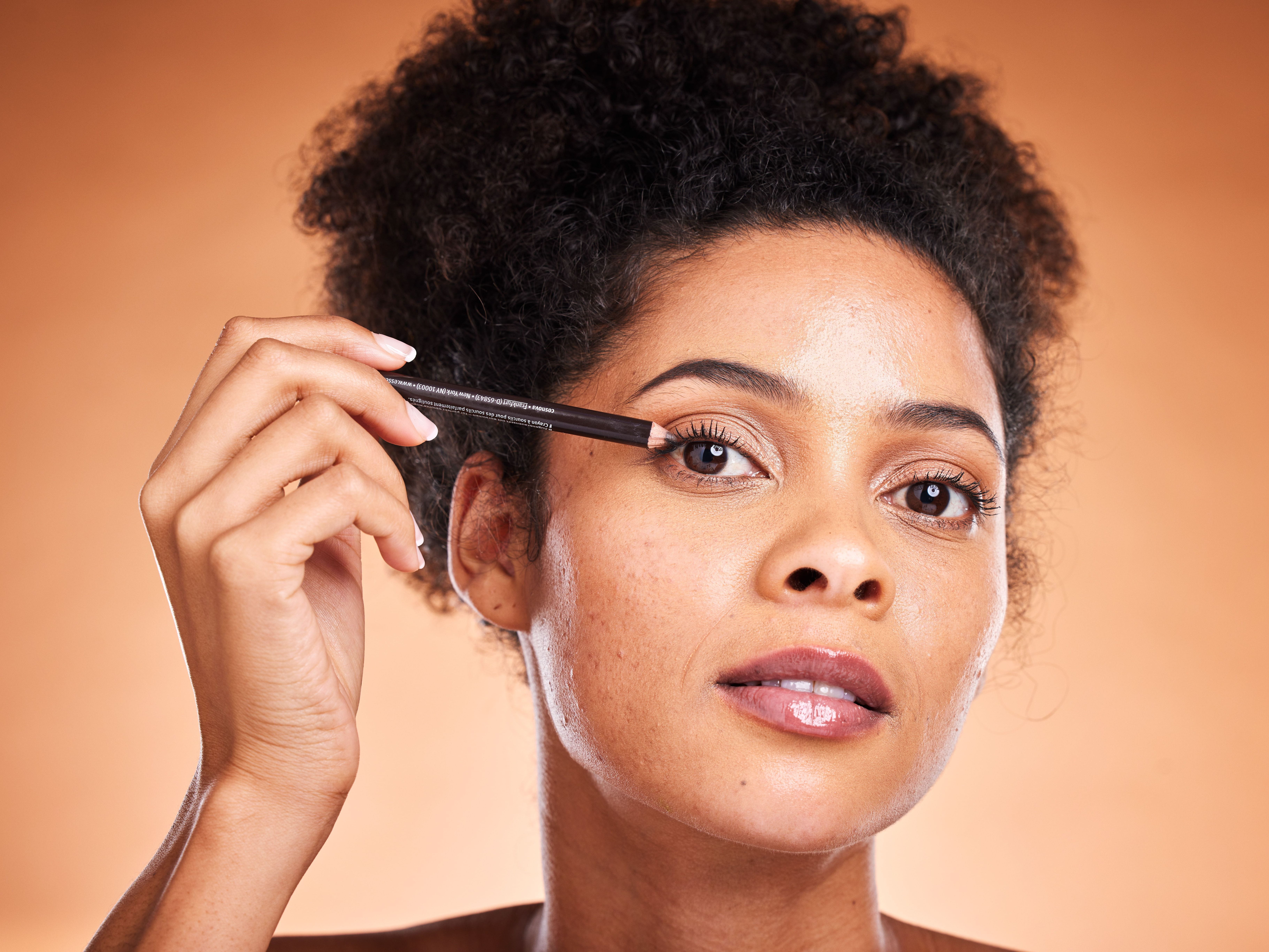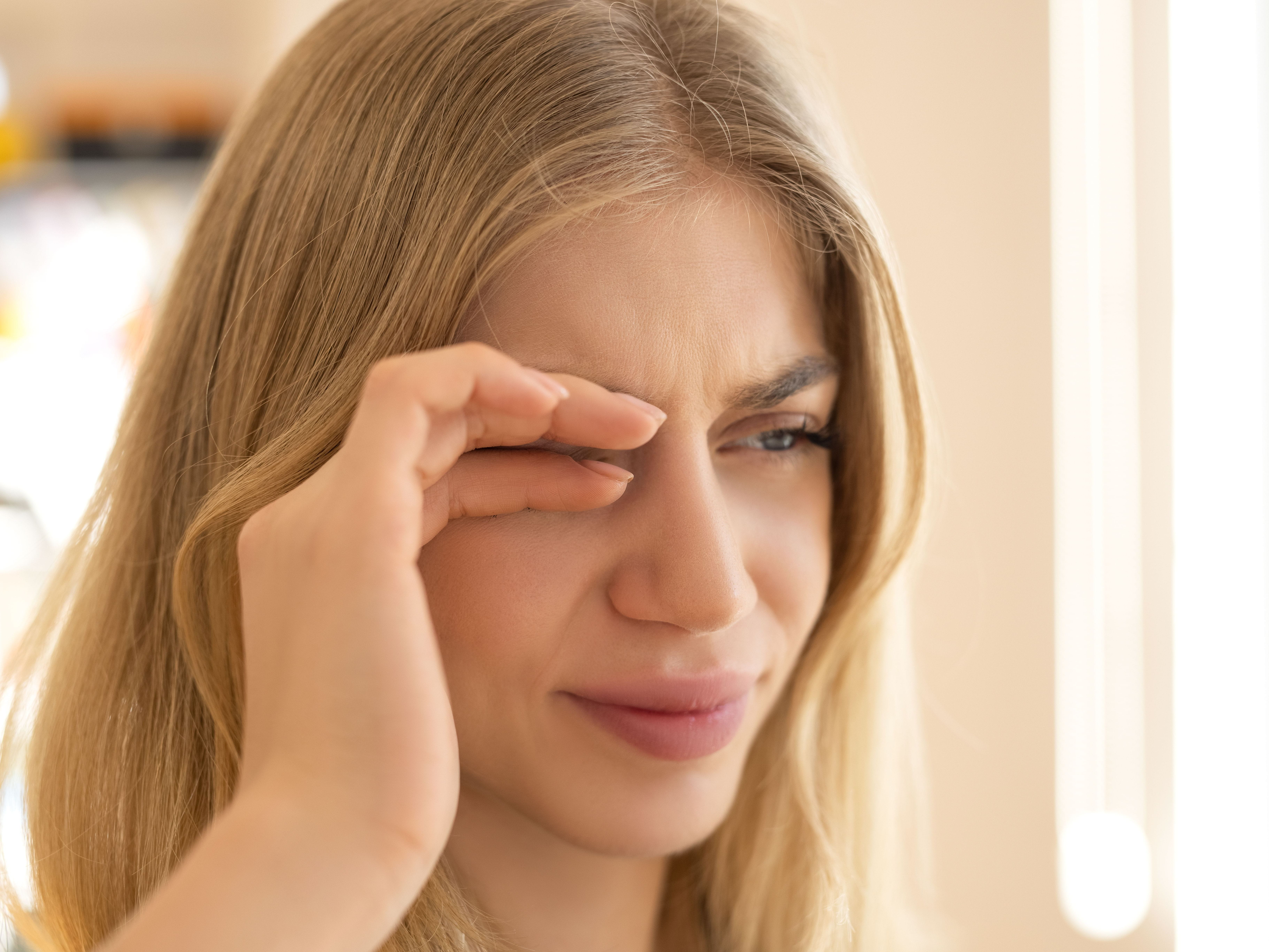What to Know About Eye Shadow and Liner

The Bottom Line
Eye makeup contains ingredients that provide color, moisturize, and aid in adhering to lids, as well as preservatives to extend shelf life. Makeup flecks in the eye can cause irritation, infection, and corneal abrasion. Allergy to eye makeup can cause irritation, redness, burning, and swelling.

What are the common ingredients in eye makeup?
Eye makeup is used to contour, define, and highlight eyes. All eye makeup contains preservatives to keep it free from bacteria and to extend its shelf life.
Eye shadow adds color, brightness, and definition to the eyes. It comes as powder, cream, or liquid and contains base fillers, binders, slip, and preservatives. The base fillers, which make up 25-30% of eye shadow, absorb moisture and/or provide color pigments. Examples include mica, talc, and kaolin clay. Binders, including zinc, magnesium, silicone, paraffin wax, and mineral oil, help eye shadow adhere to the skin. Slip (such as silica or nylon) allows eye shadow to glide on smoothly.
Eye liner adds definition and comes as pencil, pen, gel, and liquid. Ingredients vary but usually include waxes, stearyl heptanoate (an emollient to protect and moisturize skin), pigments such as iron oxides, titanium dioxide, Prussian blue, and preservatives.
Mascara lengthens and emphasizes eye lashes. Ingredients include thickening waxes or oils (such as lanolin, mineral oil, paraffin, petrolatum, castor oil, carnauba wax, or candelilla wax), pigments (such as carbon black or iron oxide), emollients which keep mascara from flaking (such as butylene glycol, glycerin, or dimethicone), and preservatives. Waterproof mascara usually contains a volatile organic solvent such as isododecane, hydrogenated polyisobutene, and cyclomethicones.
Is eye makeup bad for your eyes?
Flecks of eye makeup can get into your eyes and cause redness, swelling, irritation, or infection. Jabbing your eye with an eyeliner pencil or with a mascara wand can cause a corneal abrasion. If you don’t remove eye makeup, material can accumulate under the eyelids which can cause eye pain and irritation. Some people experience allergic reactions to eye makeup, resulting in eye and/or skin irritation where the makeup is applied.
Does eyeshadow contain talc?
Yes, some eyeshadows contain talc.
Does mascara contain dangerous toxins?
Some people are allergic to some of the ingredients in mascara. Allergens include preservatives, fragrances, and metals. Using mascara daily for a long period of time may lead to some eye lash loss and stiff lashes, which can cause eye irritation and abrasion.
Is eye makeup dangerous if my child accidentally ingests it?
No. Eye makeup is considered a non-toxic ingestion so it will not make your child sick if accidentally swallowed. Some eye makeup removers contain ingredients that can cause an upset stomach if swallowed.
How to safely remove eye makeup
Wash your hands. Apply makeup remover to a cotton ball, soft washcloth, or lint-free cloth and gently apply to the eye. Leave on for 10-20 seconds and then gently swipe in a downward motion. Repeat if necessary. Rinse with water. Apply moisturizing eye cream. Do not put makeup remover into your eyes and do not scrub. Alternatives to makeup remover include baby shampoo, petroleum jelly, cleansing oils, moisturizers, and micellar water.
I am having a negative reaction to my eye makeup. What should I do?
Stop using the product. Remove eye makeup. Avoid using similar products. If the skin around your eye is irritated, try applying cool compresses. A petrolatum-based cream such as Aquaphor or Vaseline may help soothe the skin. Avoid using contact lenses until eyes have returned to normal.
If your eyes are irritated, use sterile saline eye drops, a lubricating eye drop, or antihistamine eye drops. For some allergic reactions, a steroid cream or oral antihistamine such as diphenhydramine (Benadryl) or cetirizine (Zyrtec) may be indicated.
If someone is having a negative reaction to eye makeup, gets eye makeup in the eyes, swallows eye makeup, or if you have a question about using eye makeup safely, help from experts is available through the webPOISONCONTROL online tool and by phone at 1-800-222-1222. Poison Control’s expert guidance is always free, confidential, and available 24 hours a day.
Wendy Klein-Schwartz, Pharm.D., MPH
Clinical Toxicologist
Poison Control Media Information
Did you find this page helpful? If so, we need your support. Poison Control is in constant competition with misinformation online. Links to www.poison.org or our webPOISONCONTROL triage tool from other websites and blogs help internet searchers quickly find accurate information and Poison Control’s contact information in an emergency. If you use the content from this page, please provide attribution via a link back to this page, www.poison.org, or https://triage.webpoisoncontrol.org/#!/exclusions. By doing so, you could save a life. Thank you!
Poisoned?
Call 1-800-222-1222 or
Prevention Tips
- Wash your hands before applying makeup.
- Clean brushes at least once a week; you can wash them with diluted baby shampoo.
- Remove eye makeup each day.
- Do not sleep in eye makeup.
- Do not line your inner eyelid which can block tear ducts.
- Replace eye makeup regularly to avoid risk of infection; every 3 months for mascara and every 6 months for other eye makeup products.
- After you have an eye infection, throw away your eye makeup and buy new products.
- If you have sensitive eyes, use hypoallergenic or ophthalmologist or dermatologist tested eye products.
- Don’t share eye makeup.
This Really Happened
A 30-year-old woman was visiting with a friend in another city. She forgot to pack her makeup bag, so she borrowed makeup from her friend including eye shadow, liner, and mascara. She went out for the evening and was too tired to remove the makeup before going to sleep. She woke up the next morning with irritation of her eyelids and burning and redness in her eyes. She removed the makeup in the morning and put drops in her eyes, but the irritation, burning, and redness persisted. She contacted Poison Control and the specialist instructed her not to wear her contact lenses, continue using saline eye drops, and to use a petrolatum-based cream on her eyelids. If her condition worsened, she would need to see a health care professional. Since her eyelids and eyes looked and felt better the next day, she did not need to be seen by the doctor.
For More Information
References
Poisoned?
Call 1-800-222-1222 or
Prevention Tips
- Wash your hands before applying makeup.
- Clean brushes at least once a week; you can wash them with diluted baby shampoo.
- Remove eye makeup each day.
- Do not sleep in eye makeup.
- Do not line your inner eyelid which can block tear ducts.
- Replace eye makeup regularly to avoid risk of infection; every 3 months for mascara and every 6 months for other eye makeup products.
- After you have an eye infection, throw away your eye makeup and buy new products.
- If you have sensitive eyes, use hypoallergenic or ophthalmologist or dermatologist tested eye products.
- Don’t share eye makeup.
This Really Happened
A 30-year-old woman was visiting with a friend in another city. She forgot to pack her makeup bag, so she borrowed makeup from her friend including eye shadow, liner, and mascara. She went out for the evening and was too tired to remove the makeup before going to sleep. She woke up the next morning with irritation of her eyelids and burning and redness in her eyes. She removed the makeup in the morning and put drops in her eyes, but the irritation, burning, and redness persisted. She contacted Poison Control and the specialist instructed her not to wear her contact lenses, continue using saline eye drops, and to use a petrolatum-based cream on her eyelids. If her condition worsened, she would need to see a health care professional. Since her eyelids and eyes looked and felt better the next day, she did not need to be seen by the doctor.
